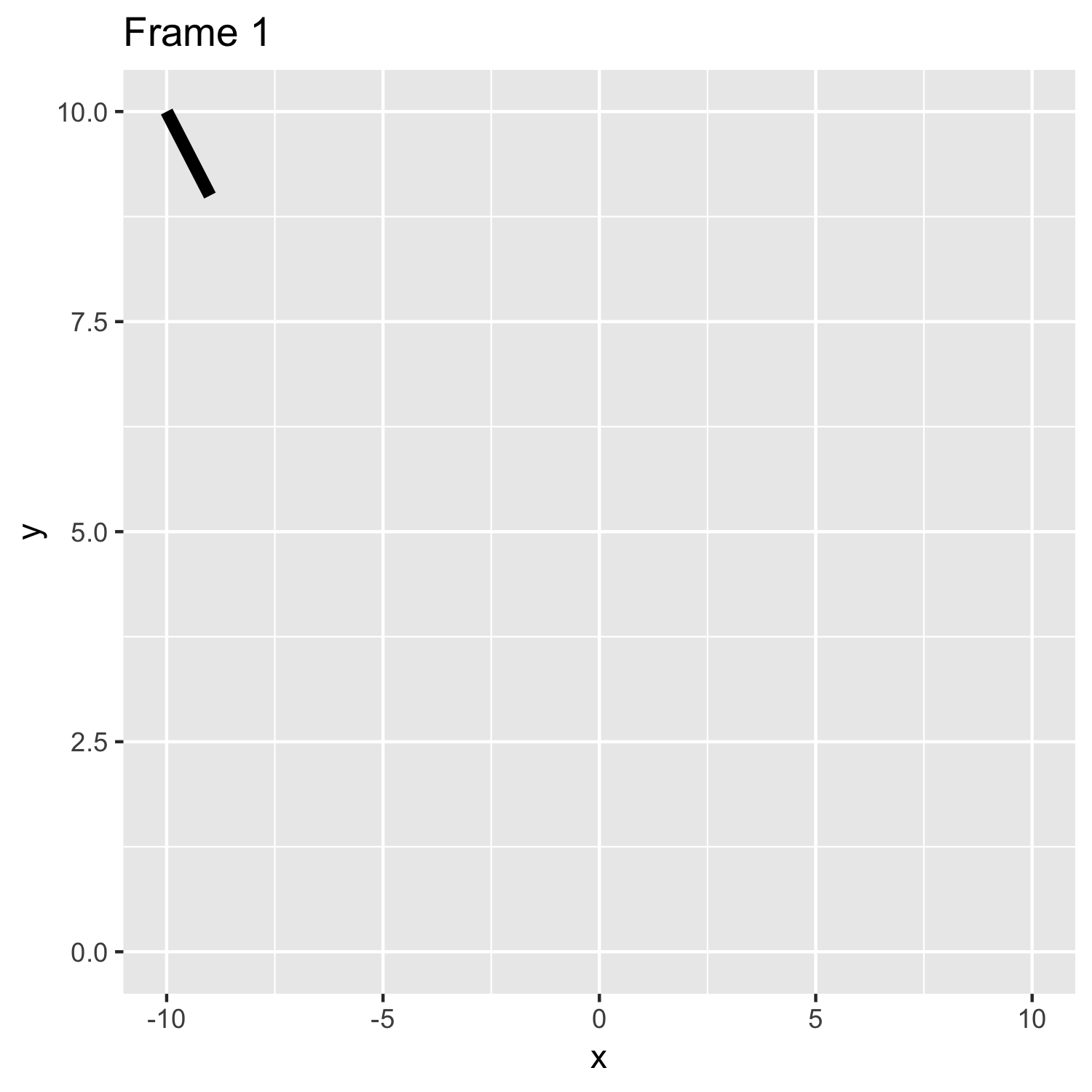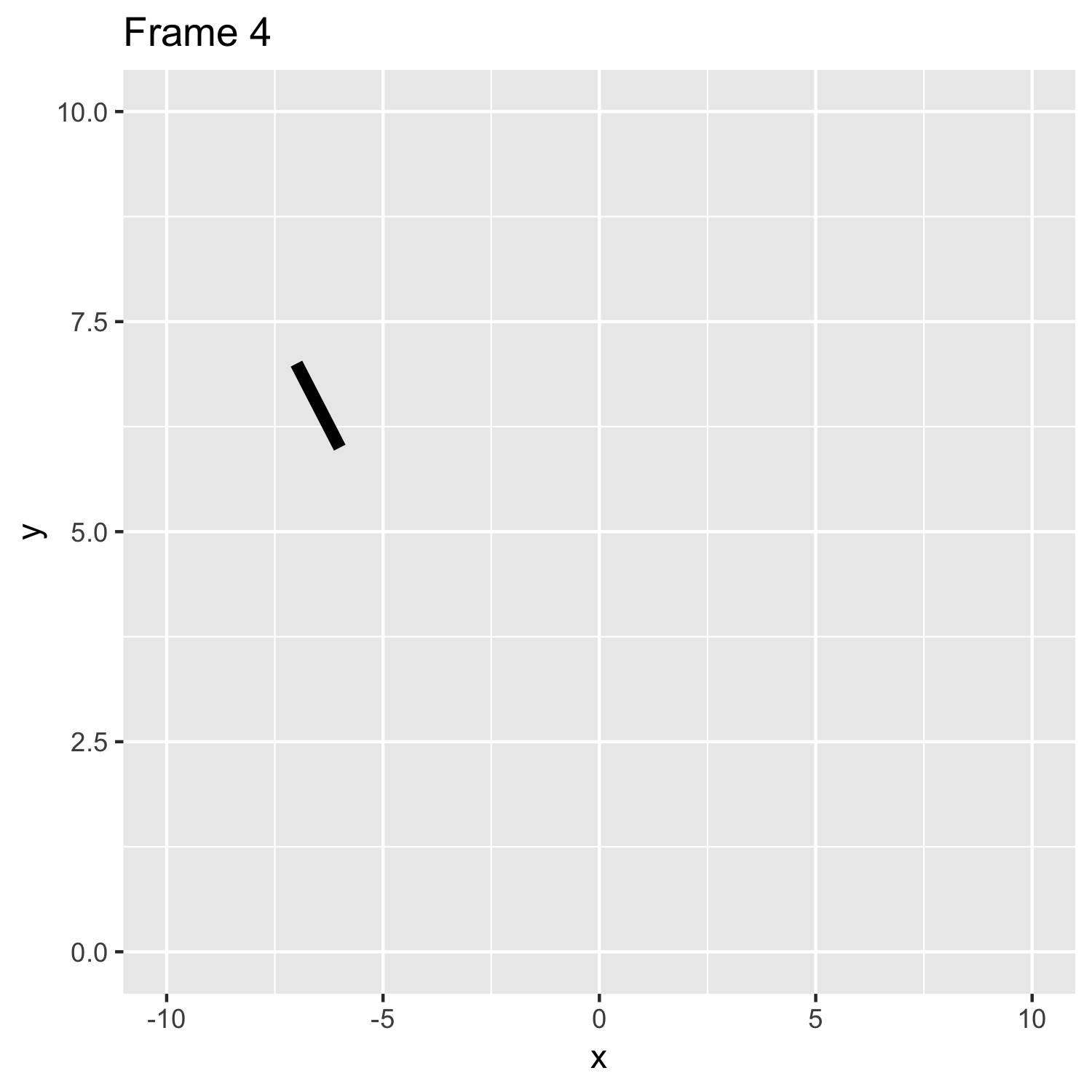Example 1:
Objective: reveal a single point sequentially: reveal (x_{i}, y_{i}) + hide (x_{i-1}, y_{i-1})
library(reprex)
# Packages + Data
library(ggplot2)
library(gganimate)
library(tibble)
df <- tibble(x = -10:10, y = abs(x))
# Plots
p1 <- ggplot(data = df, aes(x, y)) +
geom_point(size = 5) +
transition_manual(x) +
labs(title = "transition_manual(x)")
p1 <- animate(p1)
#> nframes and fps adjusted to match transition
p2 <- ggplot(data = df, aes(x, y)) +
geom_point(size = 5) +
transition_manual(y) +
labs(title = "transition_manual(y)")
p2 <- animate(p2)
#> nframes and fps adjusted to match transition
combine_gifs(plot1 = p1, plot2 = p2)
#> Loading required package: magick
#> Linking to ImageMagick 6.9.9.39
#> Enabled features: cairo, fontconfig, freetype, lcms, pango, rsvg, webp
#> Disabled features: fftw, ghostscript, x11
Created on 2018-12-11 by the reprex package (v0.2.1)
Verdict: Success.
Comment: To reveal the points in a vertical direction, use transition_manual(y). Very intuitive.
















I've been a fan of
gganimate. Great package! I am updating several animations I had made with the earlier API... I cannot seem to even get started. I have seen the wiki, but these examples are too advanced and I didn't manage to adapt them right away to my simple needs. I would like to suggest adding simpler examples to the README and/or wiki.Suggestion: (Help) Create a few simple examples for dummies:
In the
reprexbelow, I suggest 4 or 5 examples that a newbie could use to get started. Please help me use the correct syntax in those cases where I haven't worked it out. Thanks!Below two basic plots to animate:
Created on 2018-12-11 by the reprex package (v0.2.1)
A convenience function to display GIFs side by side (used in the examples below).